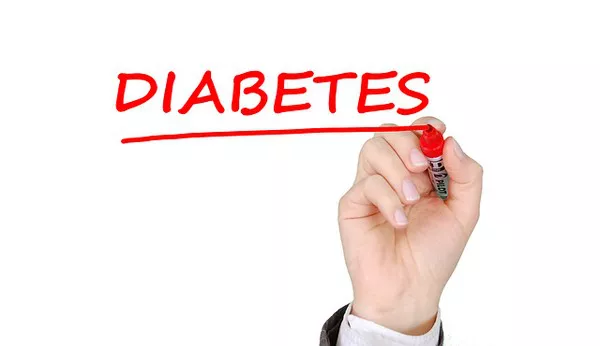Diabetes mellitus, a chronic metabolic disorder characterized by elevated blood glucose levels, manifests in various forms, each necessitating distinct management strategies. Among these, type 1 diabetes mellitus (T1DM), traditionally considered a condition of childhood onset, occasionally emerges later in life. Termed late-onset type 1 diabetes, this condition poses diagnostic challenges due to its atypical presentation and is often misdiagnosed as type 2 diabetes mellitus (T2DM) initially. Understanding the symptoms, diagnostic criteria, and management principles specific to late-onset T1DM is crucial for clinicians to ensure timely intervention and optimal patient outcomes.
Type 1 diabetes mellitus results from autoimmune destruction of pancreatic beta cells, leading to absolute insulin deficiency. Classically, it presents in children and adolescents with abrupt symptom onset, including polyuria, polydipsia, weight loss, and fatigue. In contrast, late-onset type 1 diabetes manifests after the age of 30, sometimes even in older adults, complicating its recognition due to its clinical overlap with T2DM, a more prevalent form associated with insulin resistance.
Epidemiology
The incidence of late-onset T1DM varies geographically but comprises a significant proportion of adult diabetes cases. Epidemiological studies indicate that approximately 10-15% of adults diagnosed with diabetes have features consistent with late-onset T1DM rather than T2DM. The incidence peaks around the fifth and sixth decades of life, with a slight predominance in men compared to women.
Clinical Features
Initial Symptoms
Late-onset T1DM commonly presents with nonspecific symptoms, contributing to delayed diagnosis. Key clinical manifestations include:
- Polyuria and Polydipsia: Excessive thirst and increased urination result from hyperglycemia-induced osmotic diuresis, a hallmark of diabetes mellitus.
- Weight Loss: Despite adequate caloric intake, individuals may experience unintentional weight loss due to catabolic metabolism of fats and proteins in the absence of insulin.
- Fatigue: Generalized weakness and fatigue are common, reflecting cellular energy deprivation exacerbated by hyperglycemia.
- Blurred Vision: Acute changes in refractive index due to osmotic effects on the lens may cause transient blurring of vision.
Advanced Symptoms
As the disease progresses and insulin deficiency worsens, individuals with late-onset T1DM may develop more severe symptoms, including:
- Ketoacidosis: Inadequate insulin levels lead to accelerated lipolysis and ketogenesis, culminating in diabetic ketoacidosis (DKA), characterized by metabolic acidosis, ketonuria, and potentially life-threatening complications.
- Infections: Susceptibility to infections, particularly recurrent yeast infections in women and urinary tract infections, may occur due to elevated blood glucose levels providing a favorable environment for microbial growth.
- Altered Mental Status: In severe cases of DKA, patients may present with altered mental status, ranging from confusion to coma, necessitating urgent medical intervention.
Diagnostic Challenges
Differentiating late-onset T1DM from T2DM and other forms of diabetes can be challenging due to overlapping clinical features and variable disease progression. Diagnostic criteria include:
- Autoantibody Testing: Detection of autoantibodies against pancreatic islet cells (ICA), insulin (IAA), glutamic acid decarboxylase (GAD), and zinc transporter 8 (ZnT8) supports the diagnosis of autoimmune-mediated beta-cell destruction characteristic of T1DM.
- C-peptide Levels: Measurement of C-peptide, a marker of endogenous insulin secretion, aids in distinguishing between insulin deficiency (low C-peptide) seen in T1DM and insulin resistance (high C-peptide) typical of T2DM.
- Clinical Presentation: A clinical history suggestive of rapid onset and progression of symptoms, coupled with a lean body habitus and personal or family history of autoimmune diseases, supports the diagnosis of late-onset T1DM.
Management Strategies
Pharmacological Interventions
- Insulin Therapy: Initiation of exogenous insulin therapy is the cornerstone of management for late-onset T1DM. Multiple daily injections of basal and prandial insulin or continuous subcutaneous insulin infusion (CSII) via insulin pumps aim to mimic physiological insulin secretion.
- Glucose Monitoring: Regular self-monitoring of blood glucose (SMBG) helps patients adjust insulin doses and dietary intake to maintain glycemic control and prevent acute complications.
- Other Medications: Adjunctive therapies, such as pramlintide (an amylin analogue) or sodium-glucose cotransporter-2 (SGLT-2) inhibitors, may be considered to improve glycemic control and reduce cardiovascular risk in selected patients.
Lifestyle Modifications
- Nutritional Counseling: Individualized meal planning, focusing on carbohydrate counting and glycemic index, supports glycemic control and promotes overall health.
- Physical Activity: Regular exercise improves insulin sensitivity and cardiovascular fitness but requires careful monitoring of blood glucose levels to prevent hypoglycemia.
- Psychosocial Support: Diabetes self-management education and support (DSMES) programs facilitate patient empowerment and adherence to treatment regimens.
Long-Term Monitoring
- Complication Screening: Routine assessments for microvascular (retinopathy, nephropathy, neuropathy) and macrovascular (cardiovascular disease) complications are integral to long-term management.
- Patient Education: Ongoing education about diabetes management, including recognition and management of hypoglycemia and hyperglycemia, enhances patient self-efficacy and reduces the risk of acute complications.
Prognosis and Outcomes
Late-onset T1DM, if promptly diagnosed and effectively managed, offers a favorable prognosis with reduced risk of chronic complications compared to T2DM. However, delayed diagnosis and inadequate glycemic control increase the likelihood of acute complications, including DKA, and long-term sequelae, such as cardiovascular disease and renal impairment.
See also: What are the Causes of Type 1 Diabetes Mellitus
Conclusion
Late-onset type 1 diabetes mellitus represents a distinct clinical entity necessitating careful consideration in adults presenting with diabetes symptoms. Timely recognition through autoantibody testing and C-peptide measurement is crucial for accurate diagnosis and appropriate management. Effective treatment strategies, including insulin therapy, lifestyle modifications, and ongoing patient education, are essential to achieving optimal glycemic control and minimizing the risk of complications. Continued research into the pathogenesis and management of late-onset T1DM will further enhance our understanding and improve clinical outcomes for affected individuals.
In summary, while late-onset type 1 diabetes mellitus poses diagnostic challenges, a systematic approach integrating clinical assessment, laboratory testing, and tailored therapeutic interventions ensures comprehensive care and improved quality of life for patients living with this condition.
Related topics:
Glucose VS. A1c What’s the Difference



























